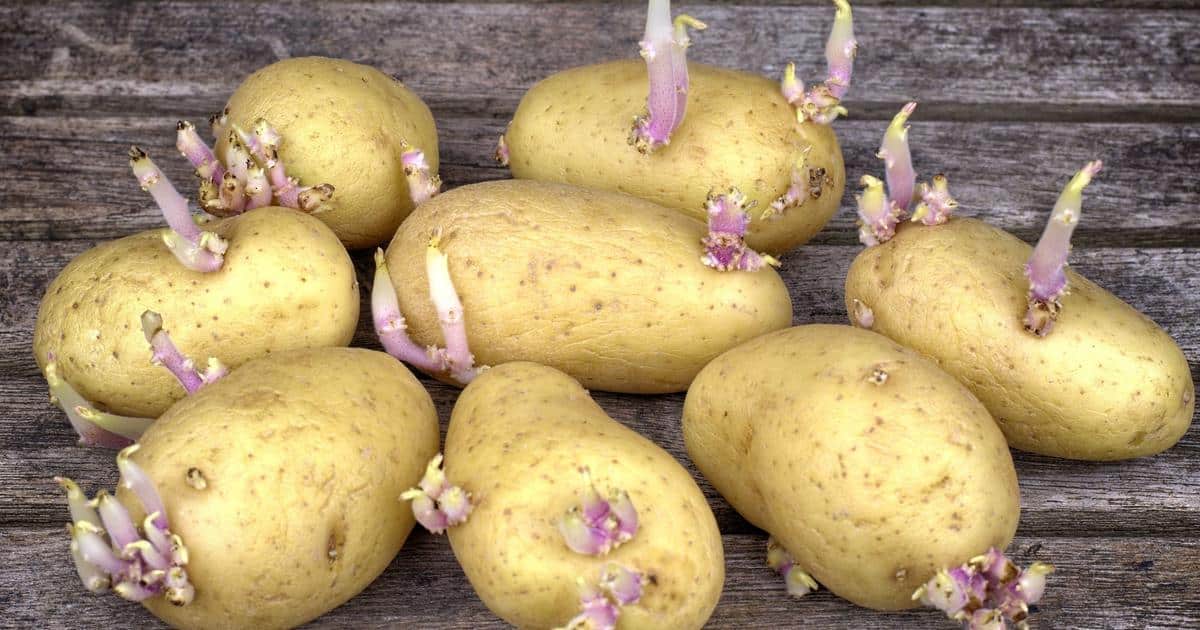Storing potatoes without having them sprout too soon can be a persistent challenge in the kitchen. Among the time-honored tips passed down through generations, one particularly surprising technique stands out: placing an apple among potatoes. This grandmother’s advice claims that it can slow potato sprouting and keep the tubers fresher for a longer period. But what underlies this trick, and how does it truly work? By exploring the science and traditions behind this method, a clearer picture emerges of its effectiveness and possible pitfalls.
Why do potatoes sprout in storage?
The appearance of small shoots on stored potatoes is a familiar sight. As potatoes age, they release natural gases that contribute to the development of these sprouts. Environmental factors such as temperature, light, and humidity also play significant roles in the sprouting process. That is why storing potatoes in a cool, dark place remains a fundamental step for anyone hoping to prolong potato storage and preserve quality.
Sprouted potatoes not only lose their appealing texture but also undergo changes in flavor. As tubers age or are exposed to warmth, starch reserves are depleted to fuel new growth. This ongoing battle against early sprouting encourages cooks everywhere to seek creative solutions that help prevent waste and keep potatoes usable longer. For those curious about the underlying science—and the effectiveness of certain tips—you can discover valuable insights about how apples and ethylene gas interact with sprouting potatoes.
The grandmother’s apple trick: does it really prevent potato sprouting?
This tip from previous generations suggests that placing an apple with potatoes can help slow the formation of sprouts. The idea might seem almost magical at first glance. However, there is some solid plant biology involved. An apple releases ethylene gas, a natural plant hormone found not just in apples but also in potatoes. The role of ethylene can be confusing: while it often triggers ripening, under certain conditions it can actually act as a sprouting inhibitor.
This trick has been discussed in cookbooks and household guides for years. Some people notice that it helps keep potatoes fresh for several weeks, while others report mixed evidence or even conflicting results. So what explains these differences, and what exactly happens inside that potato sack?
How ethylene gas influences potato storage
The secret behind this method lies in ethylene gas—the compound responsible for much of the aroma associated with ripening fruit. In many fruits, including tomatoes and bananas, ethylene speeds up ripening. When it comes to potatoes, however, the effect can be different. For short periods, ethylene gas inhibits sprouting by disrupting the plant’s internal signals that promote shoot growth. This means that, especially over the first few weeks, storing an apple among potatoes can help slow down their tendency to sprout—provided they are also kept in optimal conditions. If you wish to try this practical solution at home, you can read more about this apple-based method to delay potato sprouting.
Early results are often positive. When potatoes are stored with an apple in a cool, dry, and dark environment, there is a noticeable delay in sprouting. Timing and proper storage remain essential for maximizing these benefits.
When the apple trick stops working
The situation changes as time passes. After several weeks, the apple accelerates sprouting over time. This shift occurs because both the apple and potatoes continue to release ethylene, and prolonged exposure eventually stimulates rather than inhibits sprouting. What begins as a helpful dose of ethylene can become excessive, pushing potatoes past dormancy and encouraging those unwanted green shoots.
Potatoes themselves emit ethylene as they age. When paired with another ethylene-producing fruit, such as an apple, the cumulative effect can eventually hasten the very process one hopes to avoid. At this stage, the apple affects potato ripening and may even contribute to spoilage if left unchecked.
Best practices for using the apple trick
Treating the apple method as one component of a broader storage strategy yields the best outcomes. Simply placing an apple with potatoes is not a cure-all, but when paired with other measures, it can offer real advantages.
The following steps help maximize the benefits while avoiding drawbacks:
- Store potatoes in a cool, dry, and dark place to reduce early sprouting risk.
- Select apples that are firm and undamaged, since bruised fruit releases more ethylene.
- Replace the apple every 10–14 days to avoid excessive ethylene buildup, which may trigger sprouting after extended contact.
- Regularly check both potatoes and apples for signs of spoilage, removing any affected items promptly.
- Avoid combining potatoes with onions or other climacteric fruits, as these boost ethylene concentrations unnecessarily.
By following these guidelines, it becomes easier to maintain freshness and limit unwanted sprouting. A little attention goes a long way toward keeping produce in top condition.
Conflicting results and other factors to consider
No single method ensures perfect potatoes every time. The effectiveness of the apple trick varies based on factors such as potato variety, apple type, humidity, and airflow within storage containers. There is mixed evidence/conflicting results: some people find it highly effective, while others observe minimal impact on sprouting.
Storage potato varieties bred for longer dormancy respond differently compared to thin-skinned, early-harvest types. Not all apples emit ethylene at the same rate; some produce more gas depending on ripeness, which influences whether the result is delayed or accelerated sprouting.
Additional tips for prolonging potato storage
Classic advice holds true alongside modern tricks. Using breathable bags like burlap and ensuring good ventilation helps maintain optimal storage conditions. Keeping potatoes away from heat sources and direct sunlight preserves firmness and taste.
Maintaining a steady temperature—ideally between 45–50°F (7–10°C)—slows down metabolism and prevents rapid sprouting. Regularly inspecting stored produce allows early intervention before issues spread through the entire batch.
Alternatives and modern approaches
For those seeking more control, commercial sprout inhibitors are available in both natural and chemical forms. While large producers often use these, home cooks benefit most from simple methods such as the apple trick, especially for small quantities and short-term storage.
Combining strategies, staying attentive, and rotating produce stocks ensure that potatoes remain ready for use throughout the season. Although no single tip works perfectly every time, timing the use of an apple correctly can make a meaningful difference when aiming to store potatoes at their best.







